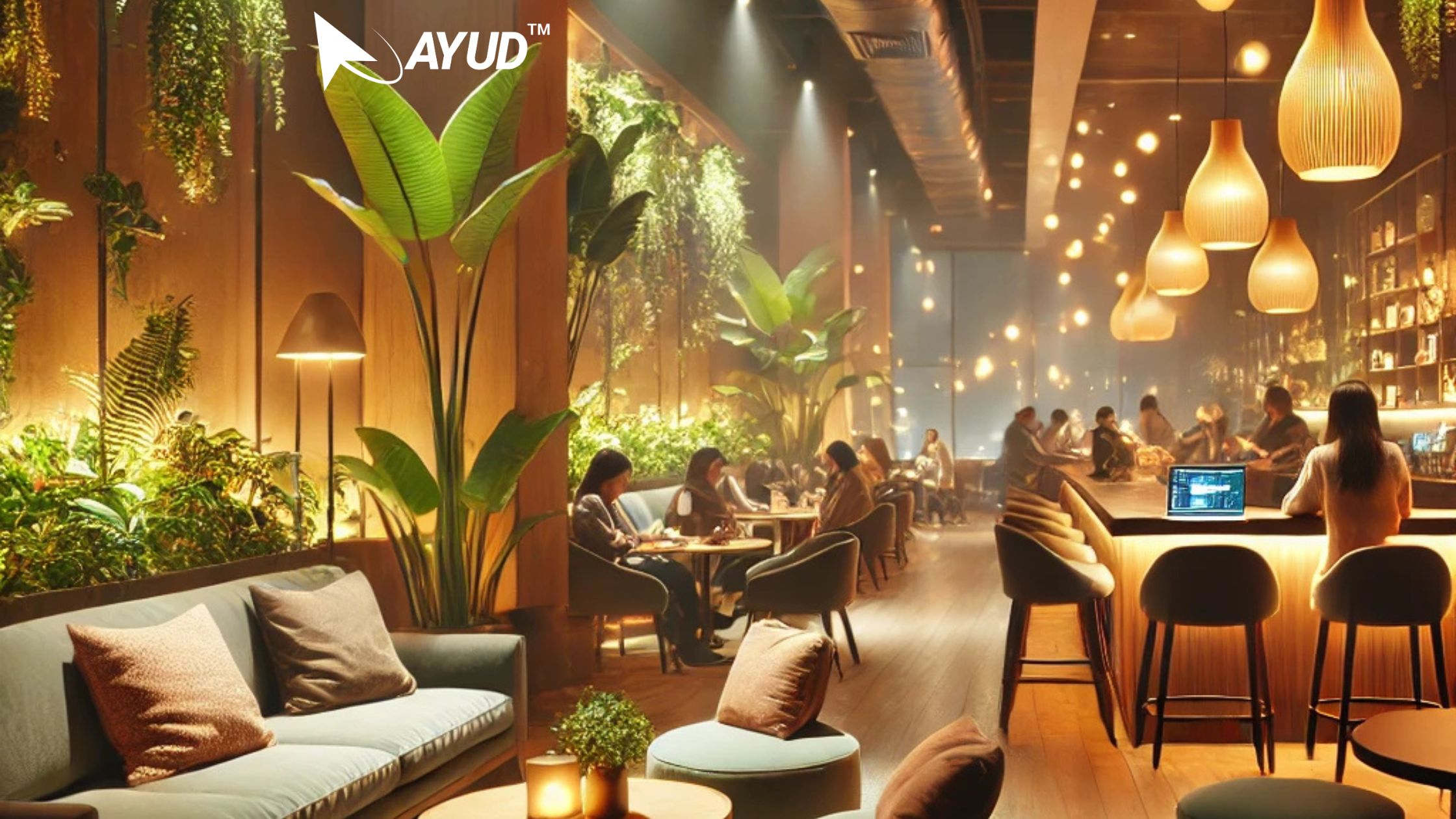Understanding Ambience Behavior The Key to Enhancing Your Environment and Mindset
Introduction
Ambience behavior is all about how our surroundings influence our mood, behavior, and overall well-being. It’s not just about how a place looks; it’s about how it feels and how that feeling impacts us. Whether it’s the soft lighting of a cozy café or the loud buzz of a busy office, the environment can affect us deeply. Understanding Ambience Behavior: The Key to Enhancing Your Environment and Mindset. In this blog, we will explore what ambience behavior means, how it impacts our daily lives, and ways we can create environments that promote positive energy and well-being.
By understanding and managing ambience behavior, you can build spaces that improve productivity, boost mood, and bring about a positive change in life. We’ll also look at a real-life example to show how ambience behavior can transform one’s experience.
What Is Ambience Behavior?
Ambience behavior refers to the effect that an environment’s atmosphere has on an individual’s emotions and actions. It’s the way colors, lighting, sounds, and even smells interact with our senses and influence how we feel and behave.
For example, imagine walking into a dimly lit room with calming music and the soft scent of lavender. You’ll likely feel relaxed and at ease. On the other hand, entering a room with bright fluorescent lights and loud noise may make you feel anxious or agitated.
In essence, ambience behavior is the connection between the physical space around us and our mental state. This concept is crucial in understanding how to shape environments that positively impact our lives.
How Does Ambience Behavior Impact Our Lives?
Ambience behavior influences us more than we realize. It affects our emotions, decision-making, and overall well-being. Below are a few ways in which the ambience of a space can impact our lives:
Emotional State
The environment around us can directly influence our mood. For example, a space filled with warm colors and natural light can boost happiness, while a cluttered, dark room may cause stress and anxiety.
Productivity and Focus
An organized and well-lit workspace can increase productivity and focus. When the environment is comfortable and free of distractions, it allows the mind to concentrate better on tasks.
Social Interactions
Ambience also plays a role in social behavior. Spaces designed with soft lighting and comfortable seating encourage people to engage more openly, fostering better communication.
Health and Well-being
The ambience of our surroundings can affect our physical health as well. Exposure to natural elements like sunlight and greenery has been shown to reduce stress levels and improve overall health.
Elements of Ambience Behavior
To understand how we can create positive environments, we need to look at the different elements that influence ambience behavior. These include:
Lighting
Lighting is one of the most critical elements. Natural light is uplifting and energizing, while artificial lighting can either enhance or reduce comfort, depending on its intensity. For example, dim lighting is perfect for relaxing, while bright lighting helps increase alertness.
Color
Colors have a psychological effect on us. Warm colors like yellow and orange often make us feel happy and energized, while cool colors like blue and green promote calmness. Choosing the right colors for different spaces can significantly impact the mood and behavior of the people using those spaces.
Sound
The sounds around us can either be soothing or distracting. Soft music or nature sounds can help people relax and focus, while loud noises or constant chatter can cause stress and disrupt concentration.
Smell
Scents are powerful triggers for emotions. Pleasant smells like lavender or citrus can lift our spirits and make us feel relaxed. On the other hand, unpleasant odors can create discomfort and irritation.
Temperature
An environment’s temperature also plays a significant role. Comfortable temperatures help people stay focused and calm, while extreme temperatures can cause discomfort and reduce productivity.
Creating Positive Ambience for Different Settings
Now that we understand the elements of ambience behavior, let’s explore how to create positive environments in various settings:
1. Home Environment
Our homes are where we spend a lot of our time. Creating a positive ambience at home can enhance relaxation, improve sleep, and boost overall happiness. Here are a few tips:
Use Warm Lighting: Install dimmable lights or lamps that emit warm tones to create a cozy and inviting atmosphere in living rooms and bedrooms.
Add Natural Elements: Bring in houseplants or flowers. They not only purify the air but also add a touch of nature, which is proven to reduce stress.
Incorporate Pleasant Scents: Use essential oils or scented candles with calming aromas like lavender or eucalyptus to create a peaceful environment.
2. Workplace Environment
A well-designed workspace can boost productivity and creativity. Employers and individuals can follow these steps to improve work environments:
Maximize Natural Light: Position desks near windows to allow sunlight to improve mood and energy levels.
Minimize Clutter: Keep the workspace organized. A clutter-free environment helps to clear the mind and improves focus.
Introduce Calm Sounds: If possible, play soft background music or nature sounds to reduce stress and enhance concentration.
3. Social Spaces
Spaces like cafes, restaurants, and lounges thrive on creating the right ambience to attract customers and encourage positive interactions.
Comfortable Seating and Lighting: Use soft lighting and comfortable seating to create a welcoming atmosphere where people feel at ease and are likely to stay longer.
Engaging Decor: Decorate with artwork or unique pieces that spark conversation and give character to the place.
Play with Aromas: Scent marketing is effective; using fresh, inviting scents like coffee or vanilla can enhance the overall experience.
A Real-Life Story: The Impact of Ambience Behavior
Let’s take an example of a small coffee shop that struggled to attract customers. The owner noticed that despite the good quality of their coffee, people preferred other cafes nearby. On the advice of a designer, the owner revamped the interior. They changed the harsh fluorescent lights to warm, soft lighting, added comfortable seating, and played soothing jazz music. The walls were painted in calming colors, and the space was decorated with greenery.
Over time, customers started to prefer the café because of its relaxed and inviting atmosphere. The simple changes in ambience behavior turned the café into a popular spot for people to work, study, or relax. This transformation shows how powerful ambience behavior is in influencing human behavior and preference. Understanding Ambience Behavior: The Key to Enhancing Your Environment and Mindset.
Practical Tips to Adopt Positive Ambience Behavior
Creating an environment that supports well-being doesn’t have to be complicated. Here are some simple tips to start enhancing your space:
Use More Plants: Adding plants to any space can make it feel more alive and reduce stress.
Adjust Lighting Based on Need: Use brighter lights for work areas and dimmer lights for relaxation zones.
Experiment with Aromas: Test different essential oils or scented candles to find what scent relaxes you the most.
Organize Your Space: Keep areas neat and clutter-free to help clear the mind and reduce stress.
The Impact of Ambience Behavior on Individual Life
Understanding and applying the principles of ambience behavior can lead to a more balanced and fulfilling life. By making simple changes in your environment, you can improve your mood, boost your productivity, and enhance your overall well-being. When you create spaces that make you feel good, you set yourself up for positive experiences and interactions. This concept is especially important for workplaces and homes, where people spend a lot of their time.
Conclusion
Ambience behavior is a powerful concept that shapes our emotional and physical well-being. By becoming aware of how our surroundings affect us, we can take control and create environments that uplift and inspire. From homes to workplaces, every space has the potential to impact our behavior positively. Remember, even small changes like adjusting lighting or adding plants can make a big difference. Understanding Ambience Behavior: The Key to Enhancing Your Environment and Mindset.
If you want to live a balanced, stress-free life, start by shaping the spaces around you. Make your environment work for you, and watch how it positively influences your mood and actions.
#AmbienceBehavior #Wellbeing #MindfulSpaces #EnvironmentMatters #ProductiveSpaces #StressFreeLiving #HomeComforts #PositiveVibesOnly #ayud #ayudjobs #askayud #MultiLanguageSupport #ResumeBuilder #gotestit #ayudian #ayudblog #ayudcareer #edutech
How to Use Ayud : A Comprehensive Guide
Join our what’s app channel for timely updates







